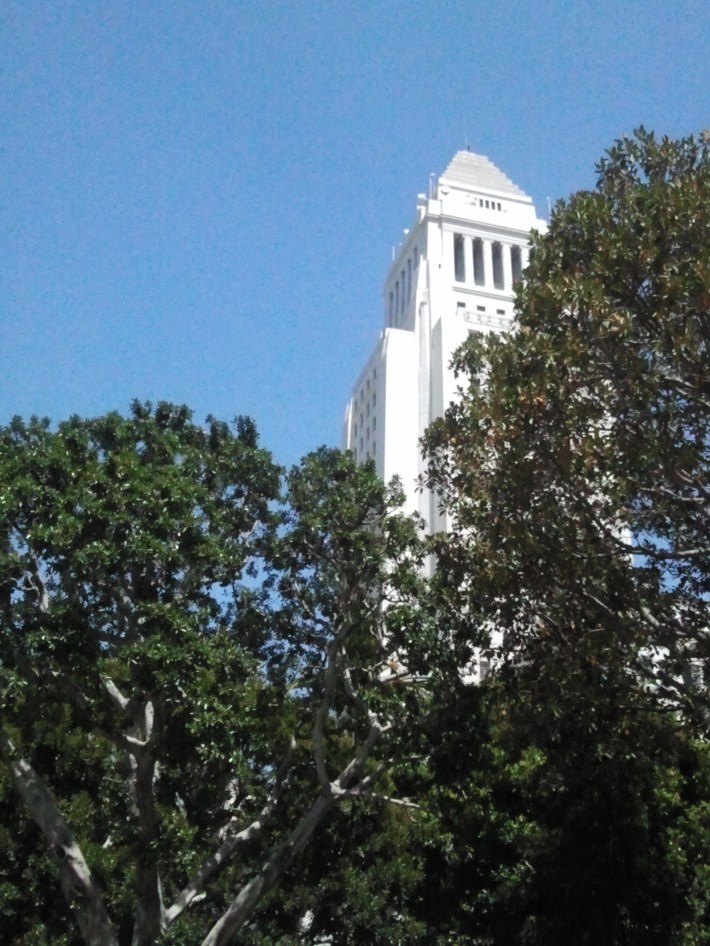So what does it all mean?
Former City Council President and outgoing CD13 Councilperson Eric Garcetti will be our new mayor for at least the next four years.
Unlike the city council, where carefully carved districts and big money campaign donations mean even the most unloved council person can be almost impossible to turn out, Los Angeles has a history of running unpopular mayors out of office.
Most recently, it was a young Antonio Villaraigosa who handily defeated incumbent James Hahn, after losing to him in their first match-up in 2001. Then again, Villaraigosa was also one of the few candidates to defeat a sitting council member in recent memory, beating Nick Pacheco to represent the 14th District in 2003.
Not that anyone should expect the new mayor to be unpopular.
In fact, Eric Garcetti has proven to be very personable and able to connect with a wide range of people. It helps that he has an exceptionally wide range of experiences, from his multi-ethnic background to his skill on the piano and work as an intelligence officer in the naval reserve.
Though not everyone trusts that smile or the promises that come with it; that hasn't been my own experience with Garcetti, however.
My first contact with him came with the city’s first attempt at passing an anti-harassment ordinance several years ago, after impassioned arguments from myself and others who had taken time out of their day to fight for the protection of bike riders.
We won just a partial victory that day, as the proposed ordinance received unanimous support from the council in concept, but was sent to the City Attorney’s office for significant revision when it was determined that the city could not write its own traffic laws, a power that is reserved for the state.
So I was surprised to find the then-Council President suddenly standing next to me as I walked away, catching me by the arm and assuring me that we had, in fact, been heard. And offering his personal promise that he would stay on top of the proposed ordinance and use his position to keep it moving forward.
He kept his word.
L.A. eventually passed a first-of-its-kind ordinance treating the harassment of cyclists as a civil violation, and allowing riders to take violators to court themselves, rather than rely on police to make an arrest. A law so groundbreaking it has rapidly been copied by cities throughout California and across the country, even as it still awaits its first test case.
Garcetti also showed his skill as a politician, casually mentioning a photo I’d posted on my blog a few days before.
Since then, I have found him to be one of the most engaged and responsive members of the city council, personally answering tweets, direct messages and emails on various issues over the years. In fact, he is the only council member I've found most effective to contact directly, rather than going though staff members; whether he can continue that as mayor remains to be seen.
And unlike most politicians, he's been willing work in the background and let others receive the credit.
I’ve had far less experience working with Wendy Greuel, Garcetti’s opponent in the election. My contact with her was limited to her chairing of the council’s Transportation Committee, which became much stronger and more responsive after she left the council in 2009 — although that may have more to do with the passion of Rosendahl, her replacement as committee chair.
Garcetti also claims credit for shepherding the revival of Hollywood after decades of blight, a transformation that has been achieved primarily through better urban planning and increased density, and a model he has held out for the rest of the city. And one that has been successful enough that my wife and I are currently looking for an apartment in the district, drawn by the vibrancy of the area after a couple decades on the increasingly dull Westside.
Thanks to the efforts of Streetsblog’s Damien Newton and the LACBC’s Civic Engagement Committee, Garcetti is on the record for his support for improved bicycling safety and infrastructure — including continuing Villaraigosa’s fight for a statewide three-foot passing law. As well as his support for building out a comprehensive transit network connecting the far corners of the city.
Although some have complained about the lack of depth and detail in his responses.
It will be up to all of us to make sure he keeps his promises and works with alternative transportation advocates to continue the transformation of the city begun under Villaraigosa and in his own district.
A good place to start would be luring away New York DOT Commissioner — and Occidental College grad — Janette Sadik-Khan, who is likely to be out of work when New York Mayor Bloomberg leaves office later this year.
Meanwhile, it’s yet to be seen what kind of support he’ll have from the incoming council.
CD13 winner Mitch O’Farrell is on the record for his strong support of bicycling, while yesterday’s other apparent city council winners — Gil Cedillo in CD1 and Current Price in CD9 — failed to respond to repeated requests to complete the LACBC’s questionnaire. However, Cedillo was interviewed by Streetsblog following the LACBC’s candidate forum in CD1.
L.A. has made great progress on bicycling and transportation issues in recent years. Hopefully, that will continue under the new leadership, and the City of Angels will proudly take its place as the world-class city it can and should be.
It’s our job to work with them to make sure it does.







